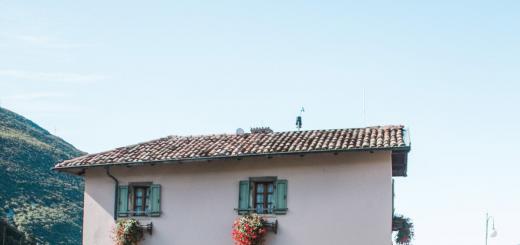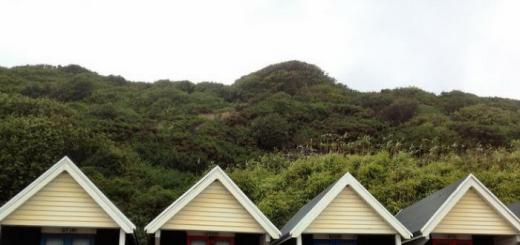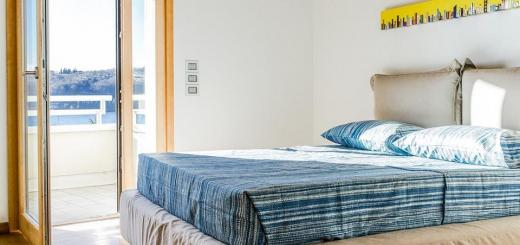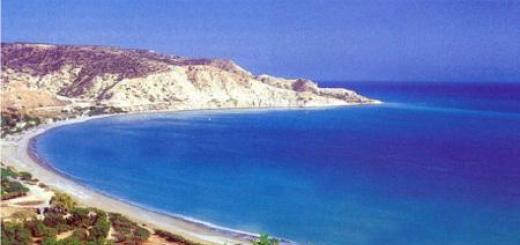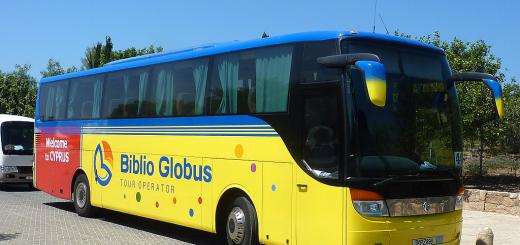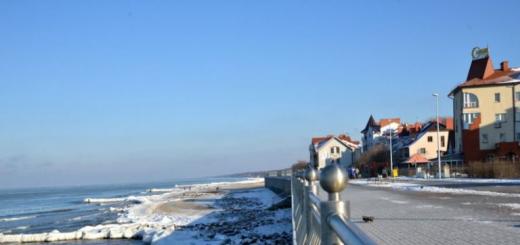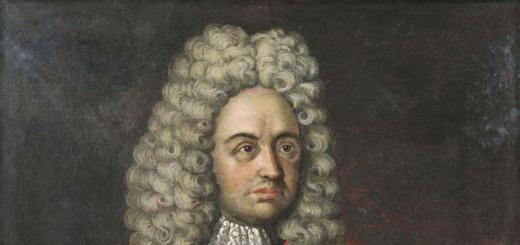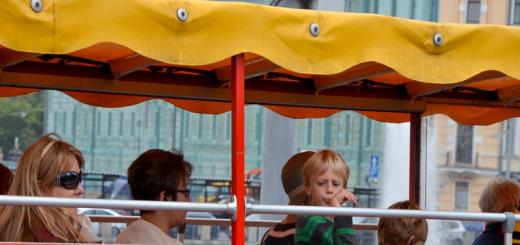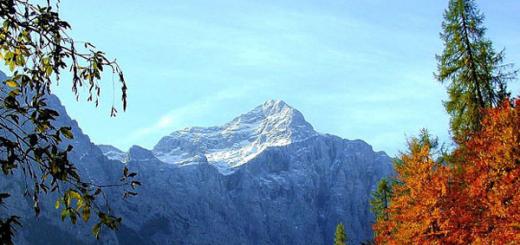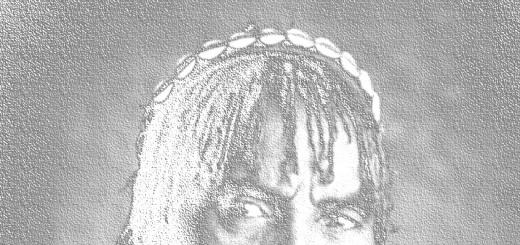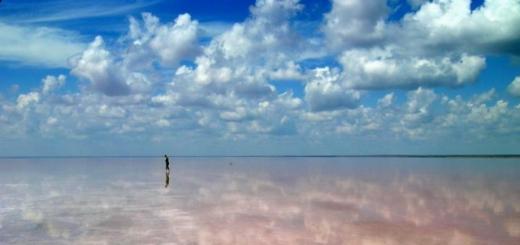Republic of Serbia
A landlocked state in southeastern Europe, in the central part of the Balkan Peninsula.
Serbia includes two autonomous provinces: Vojvodina and Kosovo and Metohija. Kosovo is under UN protectorate. The institutions of local self-government, in which Albanians are the majority, unilaterally declared the province's independence on February 17, 2008. Serbia refused to recognize the sovereignty of Kosovo.
In the north, Serbia borders with Hungary, in the northeast with Romania, in the east with Bulgaria, in the south with Macedonia, in the southwest with Albania and Montenegro, in the west with Croatia and Bosnia and Herzegovina.
After the end of the First World War, Serbia was the founder and part of the state, the majority of the population of which were South Slavic peoples: the Kingdom of Serbs, Croats and Slovenes, the Kingdom of Yugoslavia, the Socialist Federal Republic of Yugoslavia, the Federal Republic of Yugoslavia, the State Community of Serbia and Montenegro. In 2006 Serbia became a sovereign state.
general information
The Republic of Serbia is located in the south of Europe, occupies the central part of the Balkan Peninsula.
Territory 88361 km / sq.
Population over 8,000,000 people
Capital - Belgrade, administrative and economic center, more than 2,000,000 inhabitants
Serbs and Montenegrins, national minorities - Albanians, Hungarians, Romanians
Language - Serbian, Writing - Cyrillic and Latin
The Serbian and Montenegrin population mainly professes Orthodoxy, national minorities - Islam and Catholicism
Currency - dinar / YUD / Climate - temperate continental with warm summers (up to 30C) and snowy winters (within -5C -10C)
Flight connections - Belgrade International Airport: Nikola Tesla
National airline
– JAT Airways (Yugoslav Airlines)
Largest cities
- Nis (626.000), Novi Sad (265.000), Kragujevac (180.000).
The largest river is the Danube, which stretches through Serbia for 588 km.
National parks:
Kopaonik, Fruska Gora, jerdap, Tara, Caves - Resavska, Petnickaya, Zlotska cave, Risovacha, etc.
Cultural and historical monuments included in the UNESCO list
Monastery Studenica, a complex of monasteries Stari Ras and Sopochany, as well as the "White Angel" fresco in Mileshev Monastery of special value
Resorts of Serbia >>
Serbia is one of the rare countries in Europe and the world, in which all healing factors take place: water, mud, gas and air. Such wealth and more than 1,000 healing mineral springs have made Serbia an oasis of health in Europe.
Customs regulations >>
Foreign citizens can bring in an unlimited amount of currency, which they must present and declare when entering the country. An equivalent amount can be taken out of the country.
Visa >>
For citizens of the Russian Federation, entry into the territory of Serbia is visa-free (up to 30 days).
Working hours - from 08:00 to 19:00, on Saturdays - from 08:00 to 13:00, Sunday - day off.
Credit cards
In some shops and hotels, it is possible to pay with credit cards: "VISA International" and "DINERS CLUB International".
ATMs
exist in banks, at the airport and in some hotels.
The shops
– grocery stores are open from 6.00 to 20.00. Other shops and department stores are open from 8.00 to 20.00. On Saturdays, shops are open from 8.00 to 15.00. Sunday - day off
Electricity
The voltage used is 220 V. An adapter according to the European standard is required.
Difference in time:
Serbia belongs to the Central European time zone. Moscow +2 hours. Kiev +1 hour
National cuisine
Serbian cuisine is very diverse and can satisfy every taste: from spicy Hungarian goulash in Vojvodina to kebabs (cevapcici) in Serbia and Kosovo.
The cheapest snack is the Balkan "burek", which is a layered pie with cheese or meat. "Krompirusha" is a potato burek. You can buy them everywhere.
The specialty of Vojvodina is spicy stewed river fish - "alaska chorba".
You can also try the shepherds' food "kaymak" - salted cream with cheese.
In Serbia, peppered minced meat is famous - "cevapcici" and pork and veal with onions and peppers.
Serbian "dyuvech" is a pork cutlet with peppers, tomatoes and rice cooked in the oven.
Popular dishes in Serbia are also: "moussaka" - eggplant and tomatoes with layers of ground meat; "sarma" - cabbage rolls; pumpkin stuffed with minced meat and rice, and stuffed peppers. Each establishment has a Serbian salad (shopska is very tasty).
Beer is popular in Serbia and can be bought everywhere. Grape brandy is called "vinac" here. Strong coffee is mainly brewed in Turkish style, in small cezves.
Name:
Title (English):
Title (original language):
Republic of Serbia
Short description:
Serbia is one of the countries of the Balkan Peninsula. The country is famous for its rich history, surprisingly hospitable people and the incredible beauty of nature. Serbia is also diverse and attractive for its culture, which left traces of the Turks, Romans, Byzantium, as well as other civilizations.
Area and location:
Serbia is located in the Central and South-Eastern part of Europe, occupies the southern part of the Pannonian lowland and the central part of the Balkan Peninsula. In the north, Serbia borders on Hungary, in the south - on the Republic of Macedonia, in the east - on Romania and Bulgaria, in the east - on Montenegro. The total area of the country is 25,053 km².
Capital, major cities:
The capital of Serbia is the city of Belgrade. Major cities are Novi Sad, Nis, Pristina, Subotica.
Population:
The population of Serbia is 7121 thousand people. The population is dominated mainly by Serbs - 62%, and Albanians - 17%. Montenegrins (about 5%), Hungarians (3%) and a number of other national minorities also live in Serbia.
Political structure and administrative division:
The form of government of Serbia is the Republic, the head of state is the President. The supreme legislative body of Serbia is the Union Assembly, which consists of two chambers. The highest executive body is the Government
The main religion is Christianity, namely Orthodoxy.
The official language of the country is Serbian.
Public holidays:
New Year is celebrated on January 1-2 Orthodox Christmas is celebrated on January 6-7 Statehood Day is celebrated on April 27 Orthodox Easter is celebrated in April-May Labor Day is celebrated on May 1-2 Victory Day is celebrated on May 9 Partisan Day is celebrated on July 4 Rebellion Day is celebrated on July 7 Republic Day celebrated November 29-30
Relative to Moscow, the time is 2 hours behind.
1 dinar = 100 pairs
Brief historical excursion:
The Serbian Social Democratic Party was founded in 1903. Serbia was a participant in the Balkan wars in 1912-1913. In 1941, Serbia was captured by Nazi Germany, and a puppet “Serbian government” was created in Belgrade. In October 1944, Serbia was liberated by the NOAU and the troops of the Soviet Army.
In November 1945, Serbia became part of the FPRY as a people's republic, and in 1963 became a socialist republic within the SFRY. With the collapse of the Soviet Union and the socialist community, ethnic conflicts escalated in Serbia.
Serbia has a continental temperate climate. The country has warm summers and snowy winters. The best time to visit the country is from May to September. In the interior of Serbia, the climate is more continental than on the Adriatic coast of Montenegro. In Belgrade, the average temperature is about +17 degrees from May to September, in October - about +13 and in March about +7.
Animal and plant world:
On the slopes of the Serbian mountains there are mixed, coniferous and deciduous forests. The fauna of the country is characterized by: chamois, deer, fox, lynx, wild boar, bear, hare, dove, woodpecker, cuckoo, thrush, partridge, and golden eagle. The major rivers of Serbia are the Danube and the Tisza.
The excursion season lasts from May to October.
Culture:
In the capital of Serbia, it is worth visiting the Ada Siganlija park, as well as the National Museum on Republic Square, the house of Prince Milos and the Ethnographic Museum on Studentski Trg Square. Near Belgrade is the largest flat fortress in Europe - Brankovicha, which occupies an area of 11 hectares and is surrounded by a complex of buildings of the "Big" and "Small" cities. Enough impressions can be obtained from visiting the magnificent Byzantine-style cathedral in Kragujevac. The northernmost city in Serbia is the city of Subotica, which houses the Old Town Hall with the Historical Museum, as well as the City Museum, the Bishop of Subotica, the Art Gallery in Lenin Park and the Gothic Cathedral of St. George.
There are 2 huge shopping centers in Belgrade - Ushcha ("Uš?a") and Mercator ("Mercator"). Ushcha is open daily from 10 a.m. to 10 p.m. without lunch and days off, Mercator - from 9 a.m. to 10 p.m. without days off and lunch. Ordinary shops are open from 9.00 to 20.00-21.00 with a lunch break. Remember before going to Serbia for shopping that the largest department stores are open from 6.00-7.00 to 21.00, and convenience stores are found in resort areas and large cities.
Classical national cuisine:
Serbian cuisine is very diverse and can satisfy almost everyone. Balkan "burek" is one of the cheapest local snacks, which is a layered pie with meat or cheese. "Krompirus" is the same burek, only with potato filling. Čevapčići is the most famous minced meat in Serbia. Another local culinary "celebrity" is "duvech", which is a pork cutlet with peppers, rice and tomatoes cooked in the oven. The most popular drinks are beer, wine and grape brandy.
Interesting places:
First of all, of course, you should get acquainted with the capital of Serbia - Belgrade. This city is a kind of gateway to the country. Belgrade is located at the confluence of the Danube and Sava rivers. The heart of the city and its main attraction is the Kalemegdan fortress, which was once a Roman castrum. Currently, the fortress is a whole complex that houses Turkish baths, Orthodox churches, Muslim graves, as well as a large military museum that demonstrates the rich military history of the country. Stari Grad is the oldest part of Belgrade, where the most expensive restaurants and palaces in Yugoslavia are located.
Traditions and customs:
Serbs are a fairly open and hospitable people who honor their culture. When visiting the country, you need to familiarize yourself with a number of specific rules in order not to cause any misunderstanding on the part of local residents: Firstly, the greeting here is made by shaking hands in European style. It is customary to give the owner a small gift when visiting a house; You can take photos only in places where there are no prohibition signs at the entrances. In Serbia, it is forbidden to photograph military installations, as well as port facilities and transport infrastructure.
The main symbol of the country is the image of a double-headed white eagle, with wings spread in flight.
The flag of Serbia is a rectangular panel, which consists of three horizontal equal stripes: the top one is red, the middle one is blue, and the bottom one is white.
The state emblem of the Republic of Serbia was approved only in 2004, replacing the coat of arms of the Republic of Serbia as part of Yugoslavia. The coat of arms depicts a double-headed eagle with a red shield with four flints on its chest. Above are the royal crown and cloak. The coat of arms is exactly the same as the coat of arms of the Kingdom of Serbia, adopted for the first time in 1882.
Transport system:
The main line of the railway passes through Novi Sad, Belgrade, Nis from Subotica. Another line leads from Belgrade to the Adriatic coast. There are 4 types of trains in Serbia: “proverbs” (fast), “express” (express), “brzi” (high-speed), and also “putnitski” (passenger). The cost for different categories of trains is different, but in general tickets are inexpensive. Bus transport is well developed in the country, in addition, a taxi is a very convenient and inexpensive means of transportation in any city in Serbia. For the most part, public transport in cities is old cars.
Airports:
Regular flights Moscow - Belgrade are carried out by Aeroflot, as well as JAT Airways.
Approximate flight time is 2.5 hours. A number of airlines offer flights with transfers in different cities of Europe.
Stations and ports:
The direct train Moscow - Belgrade goes about 2 days through the territory of Hungary and for such a route the traveler will need a transit Hungarian visa.
Exclusive:
On the territory of Serbia there are several national parks: Shara, Mount Kopaonik, Fruska Gora. While in Serbia, you should definitely visit the one-of-a-kind Danube gorge called "Dzherdap", which is located in the eastern part of the country, near the border with Romania. The most interesting in it is the Đerdap Gorge, the ancient bridge and the camp of the Mesolithic hunters Lepenski Vir.
Leisure/travel features:
The security situation in Serbia is mixed. Cases of petty theft and fraud at the "household level" often happen. Do not carry valuables, documents and large sums of money with you.
Visa for Russians:
Visa for Russians: Citizens of Russia do not need a visa to visit Serbia for up to 30 days. The validity of a foreign passport must be at least one month from the end of the trip. Russian consulates and embassies: The Embassy of the Republic of Serbia in Moscow is located at: 119285, Moscow, Mosfilmovskaya st., 46 (metro station Kievskaya or metro station Universitet) Phone: 147-42-21, 147- 41-05, 147-90-08, 147-41-06 (visa information) Fax: 937-96-15 No visa required for travel to Serbia Embassy of Russia in Serbia Belgrade 11000, Beograd, ul. Deligradska, 32 Phone: (8-10-381-111) 65-7533, 64-6068, 65-8251 Fax: 65-7845 Consular Section: Phone: 64-5345 Fax: 65-7845
How to get there:
the capital of Serbia
Alternative descriptions
. (Beograd) the capital of Yugoslavia and Serbia, a port on the Danube, at the confluence of the Sava
Hotel in Moscow
Capital of a European state
Capital of the former Yugoslavia
This capital grew on the high hill of Kalemegdan on the right bank of the Sava River at its confluence with the Danube and guarded an important crossroads of land and river roads on the way from Central Europe to the Balkan Peninsula
The name of this capital is associated with the white color of the fortress walls of the city of the Roman era.
Capital on the Danube
Ruling city of Serbia
Serbian Think Tank
City of deployment of the Serbian authorities
Serbian capital city
The main city of Serbian subjects
Capital City of Serbia
Serbian leadership city
The city where all the roads of Serbia lead
Serbia's main city
Heart of Serbia
European capital
Serbian capital city
Major Serbian city
To all cities a city in Serbia
The city that "captured" power in Serbia
One of the European capitals
The fattest point on the map of Serbia
Serbian city of power
Capital of the State of Serbia
Capital of Romania's neighboring country
Crowned City of Serbia
Crown City of Serbia
Port and capital on the Danube
The main city of the Serbian inhabitants
Capital of Serbia
Capital of a European state
City, capital of Yugoslavia and Serbia, port on the Danube
Serbia
Decided to organize a holiday in Serbia?
Looking for the best Serbia hotels, hot tours, resorts and last minute deals? Interested in the weather in Serbia, prices, the cost of a tour, do I need a visa to Serbia and would a detailed map come in handy? Would you like to see what Serbia looks like in photos and videos? What are the excursions and attractions in Serbia? What are the stars and reviews of hotels in Serbia?
Republic of Serbia- a landlocked state in southeastern Europe, in the central part of the Balkan Peninsula. It borders with UN member countries Macedonia in the south, Bulgaria and Romania - in the east, Hungary - in the north, Croatia and Bosnia and Herzegovina - in the west, with Montenegro and Albania - in the southwest.
According to the Constitution of Serbia, it includes the Autonomous Province of Kosovo and Metohija, the territory of which is actually controlled by the partially recognized Republic of Kosovo.
80% of the territory of Serbia is located on the Balkan Peninsula, 20% is occupied by the Pannonian lowland.
The north of Serbia is dominated by plains. The farther to the south of the country, the larger the mountains become. 15 Serbian mountains are over 2,000 meters above sea level.
There are 4 mountain systems in Serbia. The Dinaric Highlands occupies a large area in the west, stretching from the northwest to the southeast. Stara Planina and the East Serbian Mountains are to the east, separated from the Dinaric Highlands by the Morava River. In the south there are ancient mountains - part of the Rilo-Rhodope system. The highest point in Serbia is Mount Jeravica, 2656 m high.
Serbia airports
Belgrade Nikola Tesla Airport
Nis Constantine the Great Airport
Prishtina International Airport
Buy a plane ticket to Serbia cheap online
Serbia hotels 1 – 5 stars
Fraternal Serbia offers effective treatment at mineral spas at very competitive prices, good "skiing" at an equally attractive price and interesting sights. Ancient Belgrade and the blue Danube - all about Serbia: tours, hotels, maps.
- Tours for May to Serbia
- Hot tours to Serbia
Serbia can hardly be called a “promoted” destination yet, but in one of the types of tourism, it will already easily give odds to many countries. We are talking about health tours: local resorts are rightfully considered one of the best in Europe in terms of the number and combination of therapeutic factors. At the same time, they have quite modern equipment and offer extremely moderate prices for their services by “average European” standards. Other advantages of Serbia for tourism: good nature, mild climate, ample opportunities for hunting and fishing, and a good historical "excursion".
Modestly peeking over the shoulders of its European neighbors, which are more famous in the skiing sense, winter Serbia lures the current picky tourist with low prices, a short flight and a Slavic soul. The condition of the slopes cannot be unequivocally determined - rather, the optimistic phrase “he will try” comes to mind. And the country is really trying with might and main: new tracks appear every year, as well as "adult chips" like night skiing. Another plus is extremely affordable ski schools with Russian-speaking instructors.
Regions and resorts of Serbia
Time difference with Moscow
− 2 hours summer −1 hour
- with Kaliningrad
- with Samara
- with Yekaterinburg
- with Omsk
- with Krasnoyarsk
- with Irkutsk
- with Yakutsk
- with Vladivostok
- with Severo-Kurilsk
- with Kamchatka
Climate
The northern regions of Serbia are dominated by a continental climate: summers are hot here (average temperatures are +23 ... +25 ° C, sometimes the air warms up to barely bearable +35 ... + 40 ° C), winters are long and cold (more often In total, the thermometer drops to -1 ... -2 ° C, but frosts down to -25 ° C also occur). The climate in the southern regions is temperate continental, in the mountainous regions - respectively, mountainous.
The best time to travel to Serbia is late spring, early autumn and summer months. The season at the ski resorts officially lasts from December 8 (in fact, you can conquer the slopes already in November) until mid-March.
The warmest month is July, the coldest month is January, and the most precipitation falls in May-June. The main weather feature of Serbia is constant winds: in the off-season, bone-chilling koshava and dry severac blow in the north, cold moravac and warm south wind blow in the Morava River valley, and humid southwestern streams from the Adriatic in the western regions.
Communication and Wi-Fi
The top 3 Serbian mobile operators are Telecom Serbia, Vip Mobile and Telenor. A SIM card can be purchased at company offices, press stalls, at the post office and in some stores, while it should be borne in mind that it can take an hour or more to activate it. Express payment cards are also sold there, with the help of which it is most convenient to replenish the balance.
The operator "Telecom Serbia" has a Super Tourist SIM tariff for 1800 RSD with 30 prepaid minutes of international calls.
From payphones installed on the streets of large cities, you can make calls both within Serbia and to other countries of the world. Payphones accept Halo Kartitsa cards worth 300 RSD, calls with local subscribers cost 1.20 RSD, with Russia - 24.50 RSD per minute.
Free Wi-Fi is available in many hotels, restaurants, libraries and other public places. Internet cafes are open in big cities, in the parks of Belgrade you can find benches marked with blue flowers and providing free access to the network.
Serbia Hotels
Information Desk: 998, Tourist Information: 987, Police: 92, Fire: 93, Ambulance: 94
City codes: Belgrade - 11, Novi Sad - 21, Subotica - 24, Nis - 18.
Travel to Serbia
Serbian beaches
The swimming season in Serbia starts in mid-June, when the water in the rivers warms up to +20 °C. You can sunbathe and swim until the beginning of October, when the harsh “koshava” and “severats” blow. The most popular beaches are located right in the capital. The peninsula of Ada Ciganlija attracts both adherents of a relaxing family holiday and fans of water activities. The water here, by the way, is the purest: dams with filters connected to the right bank of the Sava form an artificial lake surrounded by beaches with sand and pebbles. Admission is free, all amenities are in place. For children, special areas with shallow water are equipped, for adults - sports grounds, cafes and bars, equipment rental points.
The blue flag is the guarantor of the cleanliness and safety of the coast of Ada Ciganlija.
Lido beach in the Zemun area is not so crowded: swimming is not recommended here, but sunbathing, playing volleyball and relaxing in coastal bars are welcome.
Another great place for a summer holiday is Novi Sad on the banks of the Danube. This is a resort with a rich history, which became fashionable among European bohemia already at the beginning of the last century. Today, on the beach "Strand" - a luxurious shady garden and developed infrastructure (from showers and toilets to restaurants of Balkan cuisine). You can diversify the cultural program by having fun at numerous festivals that are regularly held in the city.
Diving
Serbia is landlocked, but if you wish, you can dive in the waters of the Danube or large lakes. Almost all European species of fish are found here: bream, minnows, carp, catfish, all kinds of sturgeons. At the bottom of the Danube, there are wrecks from the Second World War, but you can dive to them only under the guidance of certified instructors who know the area. It is even more dangerous in underwater caves: they are practically not explored, and even experienced divers still do not risk swimming there. There are several dive schools in Belgrade and other Serbian cities where you can rent equipment, order a guided underwater tour and get all the necessary recommendations.
Treatment in Serbia
The health of the guests of Serbian resorts is taken care of not only by doctors, but also by nature itself. About a thousand mineral springs, healing mud, clean air and mild climate - everything you need for the harmony of body and spirit. Of course, doctors also work "excellently": in numerous hotels and sanatoriums they offer effective physiotherapy and spa techniques designed for patients with any diagnoses. And, what is especially pleasant, the prices for treatment in Serbia are more than moderate compared to the average European prices.
What to bring
It is better to bring handicrafts from Serbia: having tried hard, you can find truly unique gizmos in local shops. Ceramic vases, pots and whistles, scarves and shawls woven on looms, dolls in national costumes, patterned rakia flasks, knitted sweaters and socks - Balkan craftsmen know how to surprise tourists. For the sake of a joke, you can buy elements of a traditional costume: bast shoes "opantsy" with curved noses or caps "shaykachi". Much more practical purchases are handmade leather shoes and accessories: the quality and design are beyond praise.
It is impossible to leave hospitable Serbia without goodies: fruit vodka rakia, Pelinkovac wormwood liqueur, herbal tea, vegetable caviar "ajvar" and plum jam.
Cuisine and restaurants of Serbia
Accustomed to being at the center of European events, the Serbs boldly mix the gastronomic traditions of different cultures: Slavic and German, Turkish and Mediterranean. All treats are simple and incredibly tasty, with the addition of fragrant spices and kaymak milk, fermented and lightly salted in a special way.
Traditional first courses are liquid broth "soup" and rich "chorba". On the second course, you should try pork sausages “chevapchichi”, chopped cutlets “splash”, chops “hangers” and pork on a spit “cookies” (not to be confused with flour products!). Ideal combinations of meat and vegetables are juvech stew with tomatoes and an analogue of stuffed cabbage "sarma" with minced meat and rice. The most original dishes are dried “prosciutto” legs, stewed lamb “kapama” with salad and yogurt, and the thinnest steak “Karađorđeva schnitzel”. From the fish they prepare fish soup “ribla chorba”, trout with prunes and carp in cream. Instead of fast food - all kinds of pastries: puff "bureks" with fillings, thin pita pies and "priganice" donuts.
Serbs have a special passion for spicy dishes, therefore, feferoni peppers turn out to be a side dish for almost every treat.
It is better to get acquainted with authentic Serbian cuisine in traditional kafans - establishments with live music, simple interiors and a relaxed atmosphere. In small towns, there are many family restaurants serving regional dishes based on old recipes. In Belgrade, eateries with experimental cuisine are opening more and more often: this is where the chef's imagination can roam. Lunch for two in a standard cafe will cost from 1200-1300 RSD, a snack in fast food - from 450-550 RSD, dinner with alcohol in a good restaurant - from 2000-3000 RSD.
Guides in Serbia
Entertainment and attractions: Art Nouveau, romanticism, renaissance and academicism are mixed here, cafes, restaurants and souvenir shops settled in beautiful mansions. The most spectacular royal residences are the snow-white Median. The latter is located in the eastern part of the country, on the border with Romania, and is notable for its incredible views, the Lepenski Vir Mesolithic hunters' camp, the ancient Trajan's bridge and the medieval Golubac fortress. Local animals - bears, lynxes, wolves, black storks and many others.
The Kopaonik National Park in the southwestern part of Central Serbia is home to wolves, wild boars, roe deer, foxes, hares, ermines and wolverines, and there are as many as 148 species of birds. The Tara Western Reserve is home to the brown bear, chamois, roe deer, lynx, otter and over 100 species of birds, including golden eagle, griffon vulture, peregrine falcon, Eurasian eagle owl and black grouse. In the Fruška Gora National Park, under the canopy of broad-leaved forests, deer and roe deer frolic and many birds nest, including white and black storks, imperial eagles, saker falcons and black kites.
Holidays and events
January 1 - New Year, she is New Year: Serbian Santa Claus Bozic Bata puts gifts for the kids in a special stocking hidden under the Christmas tree. January 5 is the national holiday of Tutsindan, when lambs and piglets are slaughtered for the Christmas table. The next day, on Christmas Eve Badnidan, men go to the forest for badnyak - an oak log, an indispensable attribute of the main family celebration, and women cook “cookies”, pies and other goodies. On January 7, at Christmas, all this is eaten with pleasure.
January 9 - Republic Day, February 15 - Statehood Day in honor of the country's first uprising in 1804. March 22 - Babies: it's time to clean up, burn garbage, jump over fires and exchange honey cakes. The main festivities of spring are the Annunciation and Easter: church services go on in the morning, eggs and wine flaunt on the tables, in the evening mass festivities begin with round dances “kolo”. May 1, like ours, is Labor Day, 9 is Victory Day. May 6 - Dzhurdzhevdan, honoring St. George and symbolizing the boundary between winter and summer. June 28 - Vidovdan in memory of the Great Martyr Lazar.
August 2 - Ilyin's day: eating corn, melon, fresh honey and boiled nettles, you can provide yourself with health for the year ahead.
Autumn is the time for public holidays: October 20 - Belgrade Liberation Day, October 29 - Constitution Day, November 11 - Armistice Day in the First World War.
Serbia can be considered a kind of "crossroads" of Europe. The shortest roads connecting Western Europe and the Middle East run through this country. A large number of national parks, mountains, rivers make Serbia a great place for outdoor activities. However, Serbia also has a large number of unique attractions and several popular spa resorts.
Geography of Serbia
Serbia is located at the crossroads of Central and South-Eastern Europe, on the Balkan Peninsula. Serbia borders Hungary to the north, Romania and Bulgaria to the east, Macedonia to the south, and Croatia, Bosnia and Montenegro to the west. The total area of this Balkan country is 88,361 sq. km, and the total length of the state border is 2,397 km.
The autonomous region of Vojvodina occupies the Pannonian Lowland, while the rest of Serbia contains the Dinaric Alps, the East Serbian Mountains, as well as the Carpathian Mountains and the Stara Planina. The highest peak in Serbia is Mount Jeravica (2656 m).
The Danube flows through the entire territory of Serbia, the longest river in this country. The largest tributaries of the Danube are the Sava and the Tisza.
Capital
 The capital of Serbia is Belgrade, which is now home to more than 1.2 million people. Historians believe that the first settlements on the site of modern Belgrade were founded by Celtic tribes.
The capital of Serbia is Belgrade, which is now home to more than 1.2 million people. Historians believe that the first settlements on the site of modern Belgrade were founded by Celtic tribes.
Official language
The official language in Serbia is Serbian, which belongs to the South Slavic subgroup of the Slavic group of Indo-European languages.
Religion
Over 82% of Serbia's population are Orthodox Christians (Greek Catholic Church). Another 5% of Serbs consider themselves Catholics, and 2% - Muslims.
State structure of Serbia
According to the 2006 Constitution, Serbia is a parliamentary republic. The President is elected by direct universal suffrage. Legislative power belongs to the unicameral Parliament, which has 250 deputies.
The main political parties in Serbia are the Serbian Progressive Party, the Democratic Party of Serbia, and the Socialist Party.
Climate and weather in Serbia
The climate of Serbia is influenced by the Atlantic Ocean, the Adriatic Sea, and various mountain systems. In the north of the country the climate is continental with hot, humid summers and cold winters, and in the south - temperate continental, with elements of the Mediterranean climate. The average air temperature in July is +22C, and in January - about 0C. The average monthly rainfall is about 55 mm.
Average air temperature in Belgrade:
- January - -3C
- February - -2C
- March - +2С
- April - +7С
- May - +12С
- June - +15С
- July - +17С
- August - +17C
- september - +13C
- october - +8С
- November - +4С
- December - 0C
Rivers and lakes
The Danube flows through the entire territory of Serbia, the longest river in this country. It has tributaries the Sava, Tisa, and Begey. In addition, there are other rivers in Serbia - Velika Morava, Tamish, Western Morava, Drina, Ibar, South Morava, Timok and Radik.
There are several large natural and artificial lakes in Serbia - Lake Djerdap, White Lake, Palic, Borsko, Srebrno, Zlatarsko and others.
History of Serbia
The Slavs settled on the territory of modern Serbia in the 17th century AD. After some time, Serbia fell under the rule of the Byzantine Empire. In the middle of the 10th century, an independent Slavic principality was formed in western Serbia.
 In 1170, the Nemanjić dynasty began to rule in western Serbia. In 1217, the Pope presents the crown to King Stefan Nemanich. The heyday of the kingdom of Serbia came in the XIV century, when the country was ruled by Stefan Dusan.
In 1170, the Nemanjić dynasty began to rule in western Serbia. In 1217, the Pope presents the crown to King Stefan Nemanich. The heyday of the kingdom of Serbia came in the XIV century, when the country was ruled by Stefan Dusan.
However, in 1389, the Serbian army was defeated by the Turks in the Battle of Kosovo, and gradually the Ottoman Empire began to conquer the lands of Serbia. From 1459 Serbia became a province in the Ottoman Empire.
Only in 1878 Serbia became independent, and in 1882 the Kingdom of Serbia was proclaimed.
The First World War in 1914 began after the invasion of Austrian troops into the territory of Serbia. In December 1918, the Kingdom of Serbs, Croats and Slovenes was formed, which then became known as Yugoslavia.
After the end of World War II in 1945, socialist Yugoslavia was formed, led by Josip Broz Tito. The 1974 constitution was one of the reasons for the expansion of Croatian, Slovenian and Albanian nationalism.
Croatia, Macedonia, Slovenia, Bosnia and Herzegovina seceded from Yugoslavia in 1991-92. Almost all of the 1990s, Yugoslavia (i.e. Serbia) was at war with its former republics. The Serbs had a particularly difficult time in the war in Kosovo after NATO intervention. As a result, Kosovo seceded from Serbia.
In 2003, the state of Serbia and Montenegro was formed, which existed until 2006. Now the Republic of Serbia covers an area of 88,361 sq. km, and has no access to the sea.
culture
Serbs have been careful about their culture for many centuries, because. in this way they maintained their identity under the rule of the Ottoman Empire. Until now, the Serbs annually celebrate various holidays, the history of which dates back to the early Middle Ages. The most popular Serbian holiday is Vidov Dan (the local version of St. Vitus Day).
Serbian cuisine
The formation of Serbian cuisine was greatly influenced by the neighboring countries of Serbia. Turkish influence is especially noticeable, because Serbia for a long time was a province of the Ottoman Empire.
For tourists in Serbia, we definitely recommend trying “ćevapčići” (small minced meat rolls), “Pljeskavica” (cutlets), “musaka”, “podvarak” (fried meat with sauerkraut), “proja” (corn bread), “gibanica » (cheese pie), etc.
Traditional strong Serbian alcoholic drinks are šljivovica (plum brandy) and Lozovača (grape brandy, brandy).
Sights of Serbia
Serbs have always carefully treated their history, and therefore there are a lot of interesting sights in this country. The top ten attractions in Serbia, in our opinion, include the following:

Cities and resorts
The largest cities in Serbia are Novi Sad, Nis, and, of course, Belgrade.
Serbia has no access to the sea, but in this country there are a lot of balneological resorts. The most popular of them are Soko-Banya, Bujanovachka-Banya, Vrnjacka-Banya, Banya-Koviljaca, and Nishka-Banya.
Souvenirs/Shopping
We advise tourists from Serbia to bring heart-shaped gingerbread, handicrafts, folk Serbian hats, embroidered shirts, traditional folk trousers, traditional folk shoes, folk Serbian jewelry (bracelets, beads, necklaces), wine, slivovitz, as well as folk Serbian musical instruments (frula, gusle and dvojnice).
Office Hours
Serbia or Republic of Serbia- a landlocked state in southeastern Europe, in the central part of the Balkan Peninsula.
In the north, Serbia borders with Hungary (151 km), in the northeast with Romania (the length of the border is 476 km), in the east with Bulgaria (318 km), in the south with Macedonia (221 km), in the southwest with Albania ( 115 km) and Montenegro (203 km), in the west with Croatia (241 km) and Bosnia and Herzegovina (302 km).
Serbia includes two autonomous provinces: Vojvodina and Kosovo and Metohija. Kosovo is under UN protectorate. The institutions of local self-government, in which Albanians are the majority, unilaterally declared the province's independence on February 17, 2008. Serbia refused to recognize the sovereignty of Kosovo.
Mountains occupy most of Central Serbia. There are 4 mountain systems in Serbia. The Dinaric Highlands occupies a large area in the west, stretching from the northwest to the southeast. Stara Planina and the East Serbian Mountains are to the east, separated from the Dinaric Highlands by the Morava River. In the south there are ancient mountains - part of the Rilo-Rhodope system. The highest point in Serbia is Mount Jeravica (2656 m).
The largest lakes in Serbia are Đerdap Lake and White Lake. There are also waterfalls in Serbia, the largest is Yelovarnik (71 meters), it is located in the Kopaonik National Park.
Climate in Serbia
Climate in Serbia temperate continental, with warm summers (up to +30°С) and snowy winters (-5°..-10°С). The best time to visit the country is from May to September-October.
Last changes: 05/12/2013Population
Population of Serbia- 7,243,007 people (2013).
The population is dominated by Serbs (62%) and Albanians (17%). Montenegrins (5%), Hungarians (3%) and a number of national minorities also live in Serbia.
During the collapse of Yugoslavia in 1991-1995, several hundred thousand refugees from Croatia and Bosnia and Herzegovina arrived in Serbia. In 1999, there was a large wave of emigration of Albanians from Kosovo, and in 2000-2001, the emigration of Kosovo Serbs.
Most of the country's believers are Orthodox (95%), there are also large communities of Muslims (5%), Catholics (4%) and representatives of other faiths.
The official language of the country is Serbian. In Vojvodina, Hungarian, Slovak, Croatian, Romanian and Ruthenian are also spoken. In Kosovo and Metohija, the official languages are Serbian and Albanian.
Serbian belongs to the South Slavic subgroup of Slavic languages. It is a close relative of the Russian language; many words can be understood by us without translation, although the flow of speech without prior preparation is already difficult to understand.
Last changes: 05/12/2013Currency
Serbian dinar (RSD) is the national currency of Serbia. 1 Serbian dinar = 100 par.
There are coins in denominations of 1, 2, 5, 10 and 20 dinars; banknotes - 10, 20, 50, 100, 200, 500, 1000 and 5000 dinars.
Currency exchange can be done at bank branches or exchange offices. In Serbia, in public places (train stations, airports) there are currency exchange machines. The rate even in nearby exchange offices can vary quite a lot.
Banks are open from Monday to Thursday from 08.00 to 15.00-16:00, on Fridays - from 08.00 to 13.00, most banks are closed on Saturdays. In the center of Belgrade, as well as in resort areas, many currency exchange offices are open on weekends as well.
Dollars and euros are not accepted everywhere in the country. If in neighboring Croatia, Montenegro and Bosnia-Herzegovina you can pay in euros in a supermarket, then in Serbia - no. Euros and dollars will only be accepted in large hotels or by prior arrangement with the shop owner or taxi driver. In this case, you will be offered the most unfavorable exchange rate. Thus, when traveling to Serbia, it is important to immediately exchange euros or dollars for Serbian dinars.
The use of credit cards and traveler's checks is difficult almost throughout the country, with the exception of the capital and resort areas, where large shops and hotels accept Visa, Mastercard, Maestro and Diners Club, as well as travel checks.
Last changes: 05/12/2013Communication and communications
Telephone code: 381
Internet domain: .rs
Police: 92, Fire: 93, Ambulance: 94
City codes
Belgrade - 11, Novi Sad - 21, Subotica - 24, Nis - 18
How to call
To call from Russia to Serbia, you need to dial: 8 - beep - 10 - 381 - area code - subscriber number.
To call from Serbia to Russia, you need to dial: 00 - 7 - area code - subscriber number.
Fixed line
Payphones accept cards for payment, which can be purchased at newspaper and tobacco kiosks, as well as at the post office. A small number of machines accept coins and credit cards.
Calls from hotels are much more expensive, and the quality of the connection is usually worse than from a pay phone.
mobile connection
There are 3 major mobile operators in the country: Mobile Telephony of Serbia, Telenor Serbia, Vip mobile
SIM cards of local telecom operators and express payment cards are sold everywhere in post offices, shops, newspaper and tobacco kiosks, as well as in the offices of mobile operators.
Internet
The Internet is developing intensively in Serbia. In almost all cities of the country you can find many Internet cafes (usually open seven days a week).
Last changes: 05/12/2013shopping
Shops are usually open from 9.00 to 20.00-21.00 with a lunch break (from 12.00-13.00 to 16.00-17.00 depending on the establishment). Large department stores often work from 6.00-7.00 to 21.00, in resort areas and large cities there are also "round-the-clock" shops.
Numerous private outlets operate on their own schedule, and often without it at all.
Last changes: 05/12/2013Where to stay
Most of the hotels in Serbia are 3 * or 4 *, there are few five-star hotels. A significant part of the hotels are still from the "soviet" past.
However, in fairness it should be noted that the situation with hotels is gradually changing for the better. In Belgrade, for example, new modern hotels are sometimes opened, of a fairly good standard. Last changes: 01.09.2010
History of Serbia
During the existence of the Roman Empire, most of the territory of modern Serbia, then inhabited mainly by Illyrian tribes, was part of the province of Upper Moesia. Around 395, these lands were assigned to the Eastern Roman (Byzantine) Empire.
From the middle of the VI century, a gradual expansion of the Slavic tribes began on these lands, accompanied by the devastation of the Balkans. The ancestors of the Serbs settled the lands south of the Sava to the Adriatic. They assimilated or forced the former inhabitants of this territory - the Illyrians, Celts, Greeks and Romans - into cities, mainly on the coast, but also into the mountains of the Dinaric highlands and Albania.
Already from the 7th century, the Christianization of the Serbian tribes began, which ended in the second half of the 9th century with the direct participation of the disciples of Saints Cyril and Methodius.
In the middle of the 9th century, under the influence of the attack on the Serbian regions of the Proto-Bulgarians, a princely power and a state headed by prince (zhupan) Vlastimir were formed in Rashka, who managed to push back the Bulgarians and subdue part of the coastal territories.
The hereditary principle of the transfer of power, however, did not take shape, which led at the end of the 9th century to civil strife, the weakening of Rashka and its transition to the rule of the First Bulgarian Kingdom, and then, after its fall, to Byzantium. Some fortification of Raska in the middle of the 10th century during the reign of Prince Chaslav, who significantly expanded the territory of the state, was replaced after his death in 950 by the collapse of the country.
At the same time, an active penetration of Bogomilism from Bulgaria began, which also contributed to the weakening of the central government in Rashka. In 1040-1041. Belgrade and the Morava valley became the center of a mass uprising of the Slavs led by Peter Delyan against Byzantium.
From the middle of the XII century, a new strengthening of Raska began, which gradually freed itself from the power of Byzantium.
In 1190, the Byzantine Empire recognized the independence of Serbia, and in 1217, the son of Stefan Nemanja Stefan the First-crowned was crowned king of the Serbs.
By the middle of the XIV century, Serbia had developed into a major power, covering almost the entire southwestern part of the Balkans. Serbia flourished during the reign of Tsar Stefan Dusan (1331-1355). However, after his death, the state fell apart.
In 1389, the troops of the Serbian princes were defeated by the Turkish army in the Battle of Kosovo, which led to the recognition by Serbia of the suzerainty of the Ottoman Empire. Serbia was finally conquered by the Turks in 1459. Over the next 350 years, the Serbian lands were under the rule of the Ottoman Empire, and the northern regions were part of the Austrian Empire from the end of the 17th century.
The Serbian Principality was formed as a result of the First Serbian Uprising in 1804-1813. against Ottoman rule. The rebels elected Georgy Petrovich, nicknamed Karageorgy, who had previously served as a non-commissioned officer in the Austrian army, as their supreme leader. In 1811, at the assembly in Belgrade, Karageorgi was proclaimed the hereditary ruler of Serbia. But in 1813 the uprising was crushed, Karageorgy fled to Austria.
In 1815, the Second Serbian Uprising began, led by Milos Obrenovic, a participant in the First Uprising. It was successful, but only fifteen years later the Sultan officially recognized Milos Obrenovic as the ruler of Serbia.
Under the terms of the Berlin Peace of 1878, Serbia gained independence, and in 1882 was proclaimed a kingdom.
By the beginning of the 20th century, a parliamentary monarchy had developed in Serbia, and a rapid rise in the economy and culture began. Two dynasties of peasant origin - Karageorgievich and Obrenović - succeeded each other on the throne in Serbia until 1903.
As a result of the Balkan wars of 1912-1913. Serbia included the territories of Kosovo, Macedonia and a significant part of the Sandjak.
In World War I, Serbia sided with the Entente countries. During the war, Serbia lost, according to some estimates, up to a third of the population. After the end of the war, Serbia became the core of the Kingdom of Serbs, Croats and Slovenes.
In 1929, the state became known as Yugoslavia.
On April 6, 1941, German and Italian troops invaded Yugoslavia. They were joined by the armies of Hungary and Bulgaria. The country was occupied and divided: Bačka was annexed by Hungary, Macedonia and southeastern Serbia by Bulgaria, Kosovo by Albania. A puppet Independent State of Croatia was created on the territory of Croatia, Bosnia and Herzegovina. Direct German military administration was organized in central Serbia, although nominally there was Milan Nedić's own pro-German government.
As in other occupied countries, almost all Jews were destroyed in Serbia, in addition, tens of thousands of people were executed or sent to concentration camps on suspicion of collaborating with anti-fascist forces or as retribution for the actions of the partisans.
By 1945, Yugoslavia was liberated and declared a federal republic. The war caused great damage to the country. According to modern estimates, about 1.1 million citizens of Yugoslavia died during the war years, of which about 560 thousand Serbs. The Serbian population of Bosnia and Herzegovina and Croatia suffered the greatest losses, about 200 thousand people died on the territory of Serbia proper.
On November 29, 1945, the creation of the Federal People's Republic of Yugoslavia was proclaimed. Six national republics were formed in its composition, one of which was the People's Republic of Serbia (since 1963 - the Socialist Republic of Serbia). Within Serbia, two autonomous regions were created - Vojvodina, with a significant Hungarian population, and Kosovo and Metohija, where the vast majority of the inhabitants were Albanians.
A significant number of the Serb population remained outside the People's Republic of Serbia - primarily in Bosnia and Herzegovina and Croatia. Although Serbia became only one of the six equal subjects of the federation, the role of Serbs at the state level remained high: Serbs and Montenegrins, who made up only about 45% of the country's population, occupied more than 84% of positions in the state apparatus of Yugoslavia.
Initially, Yugoslavia focused on the Soviet Union, but in 1948 a gap occurred between Tito and Stalin. In 1949, the collectivization of peasant farms and the forced industrialization of the economy began. These measures, however, did not improve the economic situation and could not stop the decline in living standards.
Breakup of Yugoslavia
After Tito's death in 1980, the centrifugal tendencies in Yugoslavia intensified. Serbia began to rethink the role of Tito and the Communist Party, as well as Serbia's place in Yugoslavia. The Kosovo issue sharply escalated: in 1981, a wave of nationalist protests swept across Kosovo under the slogan "Republic of Kosovo", armed clashes began between Serbs and Albanians. In response, the Serbian opposition and the Orthodox Church began to put forward demands for limiting the autonomy of the region and strengthening the position of Serbia and the Serbian people within Yugoslavia.
In 1986, Slobodan Milosevic became the head of the Union of Communists of Serbia. In April 1987, he spoke to the Kosovo Serbs with a promise to fight for their rights and soon became a national leader in the movement to strengthen Serbia's position in Yugoslavia. In 1989, Milosevic and his supporters came to power in Serbia, Montenegro and Vojvodina.
In the same year, a new Serbian constitution was approved, effectively eliminating the autonomy of national territories. This caused mass demonstrations in Kosovo, as a result of which a state of emergency was introduced in the province. At the same time, the pro-Serbian policy of Milosevic caused discontent among the leaders of other union republics. In Slovenia, Croatia, Bosnia and Herzegovina and Macedonia, nationalist forces came to power, focused on rapprochement with the West, liberalizing the economy and achieving independence.
In 1990-1991, the first opposition parties emerged in Serbia, but power continued to remain in the hands of Milosevic and former communists, united in the Socialist Party of Serbia. The main mass media were also under the control of the socialists.
The first relatively free elections in Serbia, held in 1991, brought the socialists an unconditional victory. The fact that Serbia remained the only republic where the old apparatus retained power contributed to the formation of anti-Serbian sentiment in Europe, as well as Western support for the “democratic” regime in Croatia and the disintegration of Yugoslavia.
On June 25, 1991, Slovenia and Croatia declared their independence. Croatian Serbs in Krajina and Slavonia opposed secession from Yugoslavia, armed clashes began between Croats and Serbs, which quickly escalated into a civil war.
Then the war broke out in Bosnia and Herzegovina, where the independent Republika Srpska was proclaimed, which managed to create a strong army led by Ratko Mladic. The Milosevic government unofficially provided military support to the Croatian and Bosnian Serbs, which led to the introduction of UN economic sanctions against the country.
Serbia in the "Third Yugoslavia"
On April 27, 1992, the creation of the Federal Republic of Yugoslavia was announced, in which only Serbia and Montenegro remained. The Constitution of the FRY provided for the possibility of joining the Serbian territories of Croatia and Bosnia and Herzegovina to the state. Although union bodies were formed, real power remained in the hands of the presidents of both republics, primarily Slobodan Milosevic.
At the same time, the political and economic crisis continued to deepen in Serbia itself, and the country's international isolation grew. The trade blockade of Yugoslavia, huge military spending, the influx of about 540 thousand Serb refugees from Croatia and Bosnia and Herzegovina into the country led to a sharp drop in industrial production (by 70%), an increase in unemployment (up to 25%) and hyperinflation (2000% per month).
Although Milosevic again won the presidential election in 1992, the socialists lost their majority in parliament and were forced to bloc with the nationalist Radical Party of Vojislav Seselj.
Interethnic relations also remained tense: the autonomy of Kosovo and Metohija was finally liquidated in 1991, the broadcasting of Albanian television channels and the most influential newspapers were stopped, more than a hundred thousand Albanians were fired from public service, and several dozen people died in clashes with the police.
At the same time, Albanian separatists in 1990 announced the creation of an independent republic of Kosovo and set about creating parallel authorities and armed formations, which in 1996 were merged into the Kosovo Liberation Army. Due to discrimination and the actions of paramilitary nationalist groups, the mass emigration of Sandzak Muslims to Bosnia and Vojvodina Hungarians to Hungary began.
Despite the general crisis, the anti-Serb campaign of the Western media and their uncritical attitude towards the violation of the rights of the Serb minority in Croatia, Bosnia and Herzegovina and Kosovo contributed to the strengthening of Milosevic's position in Serbia.
In 1994, an economic reform was carried out that stopped hyperinflation and stabilized the situation in the country. As a result of privatization, however, a new elite was formed, closely linked to the ruling regime.
In 1995, military assistance to Serbian separatists in Croatia and Bosnia was stopped.
As a result of Operation Storm, the Croatian army regained control over the Serbian Krajina, which led to the mass expulsion of the Serbs. The Dayton Accords were soon signed, ending the civil war in Bosnia and Herzegovina.
In 1996, the domestic political struggle intensified in Serbia. For the first time, the Socialists were defeated in local elections in several dozen cities across the country, losing to the Unity coalition of opposition parties. The government did not recognize the results of the elections, which led to mass demonstrations in Belgrade and other Serbian cities against the Milosevic regime.
In the 1997 parliamentary elections, the democratic opposition significantly increased its representation in the assembly, but Milosevic became president of Yugoslavia in 1997, and his colleague Milan Milutinovic became president of Serbia.
The resolution of the Kosovo problem remained one of the most important tasks of the government. Clashes between Kosovo separatists and Serbian armed forces have not stopped since the mid-1990s. In fact, a guerrilla-terrorist war was waged in the region, which claimed hundreds of lives of civilians, Serbian officials and military personnel.
In 1998, the Yugoslav army was introduced into Kosovo, which by the end of that year managed to push the Kosovo Liberation Army to the Albanian border. However, it was not possible to completely suppress the resistance. The number of refugees from the region, according to the UN, in June 1999 exceeded 850 thousand people, mainly Albanians.
Moreover, repressions by the Serbian authorities and suspicions of ethnic cleansing of the Albanian population of Kosovo began to cause ever-increasing indignation of the world community.
In the meantime, the prevailing opinion in NATO was the need for military intervention in the conflict. Serbia was presented with an ultimatum on the withdrawal of troops from Kosovo and the admission of NATO military formations to Serbian territory. The ultimatum was ignored.
On March 24, 1999, NATO aircraft launched the first bombing attacks on Belgrade and other Serbian cities. The bombing continued for almost three months, until on June 9 the Serbian authorities agreed to the deployment of international security forces to Kosovo. On June 10, a UN Security Council resolution on the settlement of the Kosovo problem was adopted.
Yugoslav troops left Kosovo, power in the region passed to the Albanians. As a result of the bombing, Serbian factories and communication lines were destroyed, at least 500 people died. More than 350,000 Serbs and other representatives of non-Albanian nationalities left Kosovo.
At the same time, the withdrawal of Serbian troops made it possible to begin the process of returning Albanian refugees to the region: by the beginning of 2001, about 700,000 people had returned.
recent history
The defeat in the war with NATO weakened the position of the nationalists in Serbia. In the presidential elections in Yugoslavia in 2000, the candidate from the Democratic Opposition of Serbia (DOS), Vojislav Kostunica, won, but he did not gain an absolute majority of votes. Milosevic demanded a second round of voting in accordance with the law.
As a result of street demonstrations supported by Western countries and the United States on October 5, 2000, the Milosevic regime was overthrown and a few months later Milosevic was arrested.
Subsequent elections to the Serbian Assembly also brought victory to the DOS, with Zoran Djindjic, the leader of the Democratic Party, becoming prime minister. A program was adopted to revive the economy and strengthen the social protection of the population. Serbia's rapprochement with European states began.
In 2001, Slobodan Milosevic was extradited to the International Tribunal in The Hague, which caused a split in the ruling coalition. Milosevic's trial at the International War Crimes Tribunal for the former Yugoslavia in The Hague was unprecedented in length. Milosevic did not recognize the legitimacy of the Hague Tribunal and refused lawyers, saying that he would defend himself.
In February 2002, Milosevic delivered a lengthy defense speech in The Hague, in which he refuted several dozen counts. In addition, in his speech, Milosevic gave a detailed analysis of the background, origins and course of the NATO war against Serbia. Presented evidence (including photographic and video footage) of a number of NATO war crimes: the use of prohibited weapons such as cluster bombs and depleted uranium munitions, the deliberate destruction of non-military facilities, and numerous civilian attacks.
In 2002, a new agreement was concluded between Serbia and Montenegro, reducing the powers of the federal authorities, as a result of which, on February 4, 2003, Yugoslavia was transformed into the confederal State Union of Serbia and Montenegro.
On May 21, 2006, a referendum was held in Montenegro, at which a decision was made to withdraw from the union.
On June 3, 2006, Montenegro declared independence. On June 5, Serbia declared its independence.
On February 17, 2008, Kosovo declared its independence, which was soon recognized by the United States and some European states. Serbia declared the unconstitutionality of this step and the non-recognition of an independent Kosovo. In this, she was supported by Russia, China, India, including 5 countries from the NATO bloc Spain, Greece, Slovakia, Romania and Cyprus. Thus, out of 192 UN member states, only 65 have recognized the independence of Kosovo.
Last changes: 05/12/2013Photography is allowed only in places where there is no prohibition sign (crossed out camera). It is forbidden to photograph transport infrastructure and energy facilities, port facilities and military installations.
Mains water is usually chlorinated and relatively safe for health, but it is recommended to always use bottled water, especially outside metropolitan areas.
Milk is pasteurized and dairy products are also safe to consume. Local meat, poultry, fish, vegetables and fruits are usually tested by the sanitary and hygienic services and are considered quite safe.
You should not carry valuables, documents and large sums of money with you - just as you should not show your wallet in crowded places or leave things in the front seat of the car during stops.
Last changes: 05/12/2013Russian-Serbian phrasebook
Good afternoon! - Dobar is given!
Good morning! - Good morning!
Hey! - Hello!
Sorry)! - Sorry (those)!
Please! - Pray!
May I ask you? - May I feed you?
Congratulations! - Honor!
Thanks! - Praise!
Many thanks! - Praise is lepo!
Thank you for coming. - Thank you for coming.
I'm really grateful to you. - I've been praised for you a lot.
My pleasure! - No matter what!
Yes it is. - Yes, tacos.
Certainly. - Right.
I agree. - Let's put it down.
I have nothing against. - Nemam nishta against.
Not no
I am inviting you. - I'll call you.
Come in! - Tell me!
Last changes: 05/12/2013How to get to Serbia
By plane
Regular flights Moscow - Belgrade are operated by Aeroflot and JAT Airways, the flight time is approximately 3 hours. A number of airlines also offer flights with transfers in European cities.
Another option is to fly by S7 plane to Podgorica (the capital of Montenegro), and from there get by train to Belgrade, or fly by charter to Tivat, then by train to Serbia.
By train
The direct carriage Moscow - Belgrade goes 50 hours through the territory of Hungary. A transit visa is required.
By bus
Regular bus service is available between Belgrade and all European capitals. Especially many buses depart daily to Zagreb (Croatia), Sarajevo (Bosnia and Herzegovina), Skopje (Macedonia), Ljubljana (Slovenia), Budapest (Hungary), Sofia (Bulgaria) and Istanbul (Turkey).
In addition, the border communication is very developed. Up to seven buses a day connect Hungarian Szeged and Serbian Subbotica, Nis and Sofia, Zreyanin and Timisoara (Romania), Novi Sad and Osijek (Croatia).
By car
Distance from Belgrade by road: Moscow - 2430 km, Sofia - 395 km, Bucharest - 630 km, Budapest - 390 km, Vienna - 635 km, Zagreb - 330 km.
For those entering by car from abroad, it is obligatory to have an international driver's civil liability insurance policy (“green card”, uniform throughout the country). In the absence of such insurance is issued at the border crossing.
If entry into Serbia from neighboring states (Albania, Macedonia, Montenegro) is carried out through the territory of the Republic of Kosovo, the Serbian authorities will regard this as an illegal border crossing. As a result, it is possible to be deported from the country or collect a fine at the police station or at the immigration department (at the exit/departure from Serbia).
Last changes: 05/12/2013
